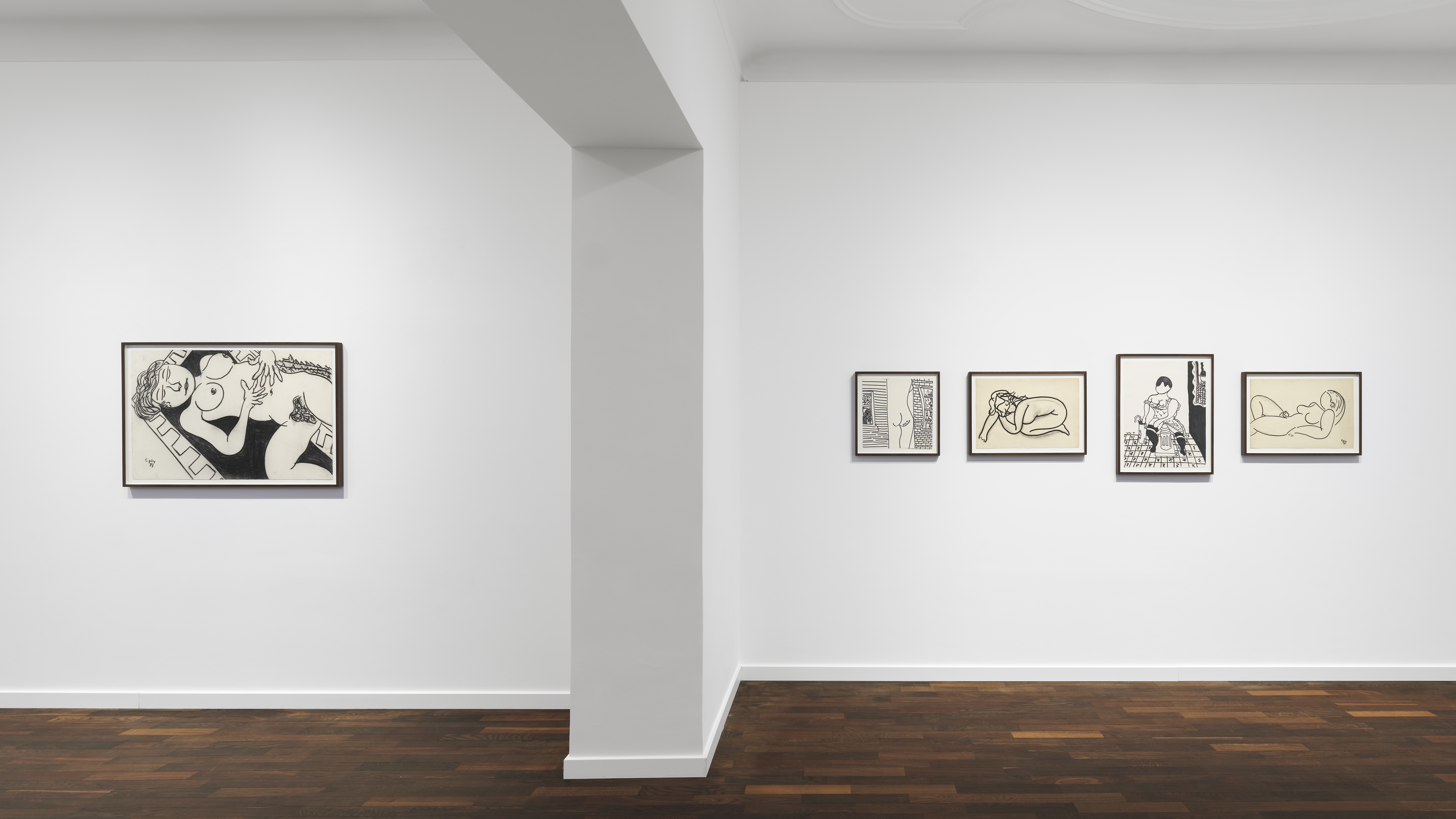
Galerie Max Hetzler has opened Works on Paper, the gallery’s second solo exhibition of works by William N. Copley, on view in Berlin through 29 October at Bleibtreustraße 15/16.
The exhibition presents a side-by-side view of two thematic groups in the artist’s oeuvre of drawings, one group focusing on Copley’s portrayal of the idealized, classical female form and the other highlighting the artist’s narrative imagery, in which Copley’s female figures become protagonists contending with social, political or religious authority.
From the gallery’s press release:
Throughout Copley’s work, his subjects and vocabulary remain consistent. The artist’s journey through life, gathering experiences, added increasing volume to flat forms, strengthening his line, and making the works more simple and direct. Themes of love and eroticism abound, with his open depiction of desire and sexuality in a repressed age, making the images psychologically and socially liberating. Images of a leading male figure reappear over time, with the combination of a clothed man and naked woman often playing on questions of power between the sexes. Drawn in the vernacular of Surrealism, the protagonists in Copley’s works have no faces, turning their actions into generalised gestures of love. Rarely is there any real connection between the characters; more than anything, they are studies of life and signifiers of psychological conditions. There are recurrent material fascinations, such as lace and buttons, which also serve as a language for femininity and masculinity and represent figures, such as the prostitute and the soldier, which can be read as representatives for female and male characters. Humour, or more precisely Copley’s love of ridicule as a means of disruption, forms another important element in the artist’s work. He used it to take on big themes, using a very playful, understated expression. This might be most clearly seen in his works on paper, which rely on line, pattern and repetition. In this way, the artist challenged society and explored moral norms, making people think by exploring love, death, politics, sexuality, patriotism and capitalism in his work.
For further information, including installation views and a list of works, please visit the gallery’s exhibition page.